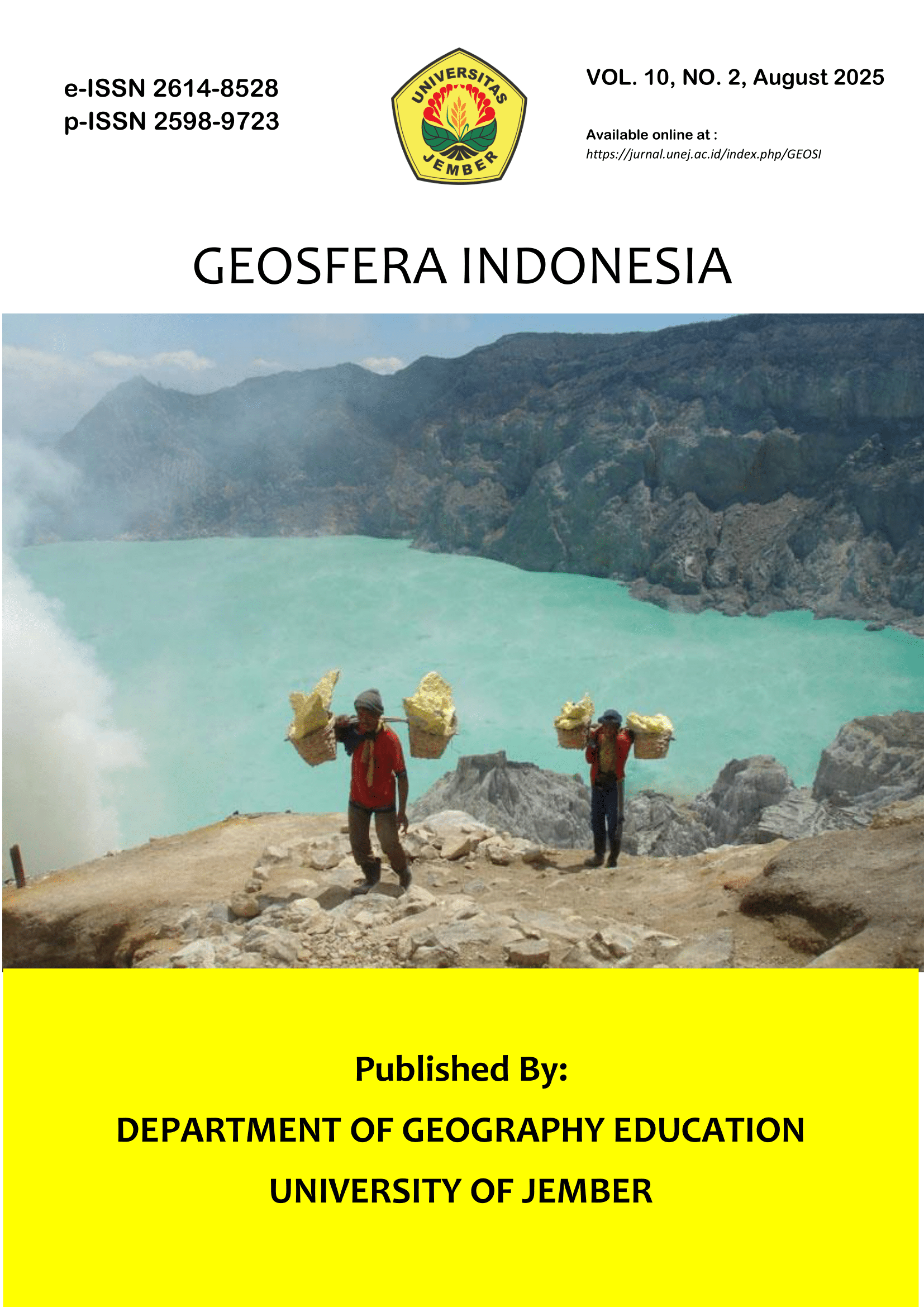School-Based Disaster Education Model in Lumajang, Indonesia
DOI:
https://doi.org/10.19184/geosi.v10i2.52600Keywords:
Disaster Education, Disaster Safe Schools, Curricular EducationAbstract
Disaster management is mostly done through a technological approach. In addition to the technological approach, disaster management needs to use a cultural, non-technological approach. This study focuses on school-based disaster education as one of the cultural approaches in the area affected by the eruption of Mount Semeru, Lumajang. The purpose of this study was to analyze the implementation of the disaster education model for high school level based on Disaster Safe Schools in the area affected by the eruption of Mount Semeru, Lumajang. The research method used is descriptive statistics to see students' perceptions of 3 aspects of disaster-safe schools consisting of the availability of disaster-safe school facilities and infrastructure, disaster management for disaster-safe schools and disaster risk reduction education for disaster-safe schools. Through Focus Group Discussion (FGD) of social studies teachers, the importance of implementing school-based disaster education was analyzed which includes three aspects of disaster-safe schools. The results in the first aspect regarding the availability of disaster-safe school facilities and infrastructure, on average students have adequate knowledge about disaster-safe school facilities and infrastructure. In the second aspect of disaster management for disaster-safe schools, students view that schools have not fully implemented disaster management and in the third aspect, namely disaster risk reduction education for disaster safety, students consider that it has not been carried out optimally. Meanwhile, for the implementation of disaster education, they prefer a curricular education model by integrating it into relevant social studies subjects. The results of the FGD with teachers revealed that in the first aspect, the four schools did not have adequate facilities and infrastructure. In the second aspect, only 2 schools carried out adequate disaster management, the other two schools were not optimal. In the third aspect of disaster risk reduction education, teachers chose to integrate it into relevant subjects. The conclusion of this study reveals that the school-based disaster education model has not been implemented by all schools in the areas affected by the eruption of Mount Semeru.
Downloads
Published
How to Cite
Issue
Section
License
Copyright (c) 2025 Geosfera Indonesia

This work is licensed under a Creative Commons Attribution-ShareAlike 4.0 International License.




